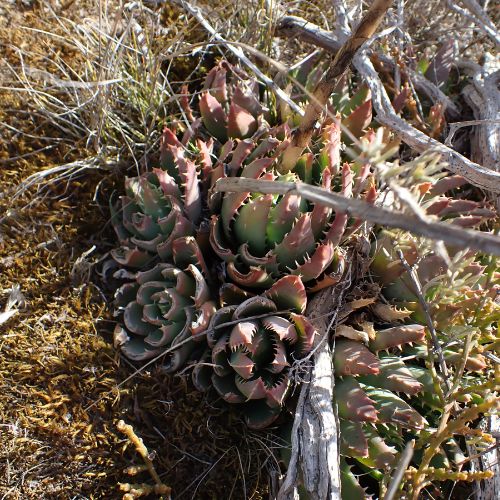
Above: Short leaved aloe (Aloe brevifolia)
Don’t forget the small islands of biodiversity – even in a farming landscape. These fragments may not be directly connected to the core natural expanses. But they play a significant role for wildlife – especially the pollinators.
The Nuwejaars Wetlands Special Management Area consists of vast stretches of wetlands, rivers and natural areas. In between, transformed lands are farmed – with our region serving as the breadbasket of the Western Cape.
But even on these farmlands, islands of natural fragments remain. And over the past three years, the Nuwejaars team has focused on giving these islands as much attention as the core conservation areas.
Finding special fynbos species
This started when vegetation surveys first identified the extent of Species of Conservation Concern that are found in these patches. While some are only a hectare in size, they pack a punch in terms of the number of endangered species that occur there.
Conservation Managers Eugéne Hahndiek and Erica Brink set about surveying the entire fynbos and renosterveld landscapes within the NWSMA, an area of around 20,500 hectares. This work, supported by horticulturist Geoff Nichols, has been funded by the Table Mountain Fund (an associated Trust of WWF South Africa), with additional funding support from the Hans Hoheisen Charitable Trust, the Mapula Trust and the Rolf-Stefan Nussbaum Foundation.

Above: Limestone Finkel (Anginon pumilum), Bontebok, Limestone Finkel (Anginon pumilum)
1. An endangered island
A 3.7-hectare patch of Endangered Elim Ferricrete Fynbos was threatened by degradation, edge effects and the potential for over-grazing. It’s completely surrounded by agricultural land – but even so, it remains home to many very special fynbos species and their pollinators. Fynbos such as Rûens Silver Pea, Xiphotheca guthriei, Trident Pincushion, Leucospermum heterophyllum and Agulhas Conebush, Leucadendron stelligerum are all special to the area. Working with the landowner, the island was fenced with biodiversity-permeable fencing to protect the site against the threats it faces.


Above: Images by Eugene Hahndiek from iNaturalist.com: Trident Pincushion (Leucospermum heterophyllum), Ruens Silverpea (Xiphotheca guthriei), and Agulhas Conebush (Leucadendron stelligerum)
2. A stepping stone for wildlife
Another fragment in a high intensity agricultural zone was identified as an important stepping stone linking an Agulhas Limestone Fynbos ridge to a wetland. The fragment was created through the establishment of lands and a public road which bisected this limestone outcrop. The surveys here showed a significant number of Species of Conservation Concern – although these were threatened by intensive agricultural practices and grazing pressure. Through further fencing, an area of 1.75 ha is protected, with the natural recovery process now underway.



3. Out of agriculture, into conservation
A third site, a 70-hectare area comprised of a series of small hills that serve as an important filter within the buffer zone of the Nuwejaars Wetlands System, was also identified as vital to protect. During the winter months these hills feed a small seasonal wetland which overflows into the Nuwejaars River system. The Endangered Elim Ferricrete Fynbos was, however, overrun with invasive alien plants. And it, too, was threatened by edge effects and potential degradation.
The first step here was to remove the alien plants from the site. This not only protected the fragment, but the removal of the invasive species has now also prevented the flow of invasive plant seeds into the river with the water – from where it would have been spread downstream. Once the plants were removed, the camp was fenced.


What’s more, the team and the landowner realised the importance of this fragment, and so with the support of the landowner, all agricultural activities were stopped here, and it was converted into a conservation camp which will now become home to the Vulnerable Bontebok. With livestock excluded, the grazing and trampling effects will be hugely reduced, and the vegetation is already in the process of recovering.
Our sincere thanks to the Table Mountain Fund (an associated Trust of WWF South Africa), the Hans Hoheisen Charitable Trust, the Mapula Trust and the Rolf-Stephan Nussbaum Foundation.









